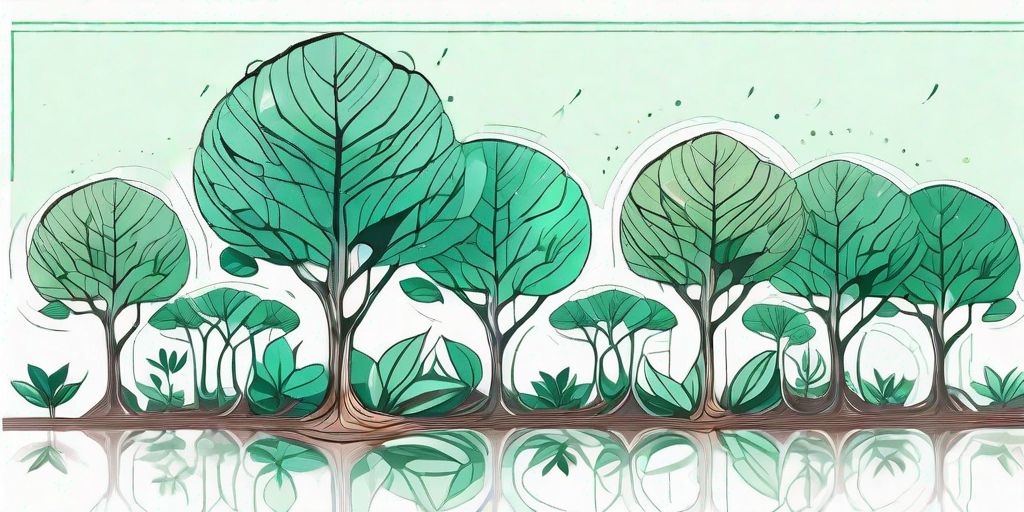
Ah, the rubber tree, a plant that's as resilient as it is charming. It's a popular houseplant, and for good reason. With its glossy leaves and sturdy structure, it adds a touch of tropical elegance to any room. But what if you want more than one? What if you want to fill your entire house with these leafy wonders? Well, you're in luck, because today we're going to delve into the fascinating world of rubber tree propagation.
The Basics of Rubber Tree Propagation
Before we get started, let's make sure we're all on the same page. Propagation, in the plant world, is the process of creating new plants from existing ones. It's like cloning, but without the scary sci-fi implications. In the case of rubber trees, this is usually done through a process called 'cutting'.
Now, don't worry, this isn't as violent as it sounds. Cutting simply involves taking a small piece from the parent plant and encouraging it to grow into a new plant. It's a bit like if you could chop off your finger and grow a whole new you from it. But again, without the scary sci-fi implications.
Tools of the Trade
Before you start hacking away at your beloved rubber tree, you'll need a few tools. A sharp, clean knife or pair of scissors is essential. You'll also need a pot with drainage holes, some high-quality potting soil, and a clear plastic bag or wrap. And of course, you'll need a rubber tree. If you don't have one already, what are you waiting for? They're fantastic!
It's also a good idea to have some rooting hormone on hand. This isn't essential, but it can help speed up the process and increase your chances of success. Think of it as the plant equivalent of performance-enhancing drugs, but legal and ethical.
How to Propagate Your Rubber Tree
Now that we've covered the basics, let's get down to business. Here's a step-by-step guide to propagating your rubber tree.
- Choose a healthy, mature leaf from your rubber tree. Make sure it's not too young or too old. Like Goldilocks, we're looking for something that's just right.
- Using your sharp, clean tool, cut the leaf off at an angle. This increases the surface area for rooting.
- Dip the cut end of the leaf into your rooting hormone. If you're not using rooting hormone, skip this step. But remember, no judgement here. We're all friends.
- Place the leaf cut-side down in your pot filled with potting soil. Make sure the cut end is well covered with soil.
- Water the soil thoroughly, then cover the pot with your clear plastic bag or wrap. This creates a mini greenhouse, keeping the humidity high and encouraging rooting.
- Place the pot in a warm, bright spot, but out of direct sunlight. Too much sun can cause the leaf to dry out and die, which is the opposite of what we're trying to achieve here.
- Wait patiently. This is the hardest step, but it's crucial. It can take several weeks for roots to form, so don't give up too soon.
- Once you see new growth, remove the plastic and start caring for your new rubber tree like you would any other. Congratulations, you're now a proud plant parent!
Common Mistakes and How to Avoid Them
Propagation can be a bit tricky, and it's easy to make mistakes. But don't worry, we've got you covered. Here are some common pitfalls and how to avoid them.
Using a Blunt or Dirty Tool
Using a blunt or dirty tool can damage the plant and introduce harmful bacteria. Always use a sharp, clean tool for cutting. And remember, cleanliness is next to godliness, especially in plant propagation.
Overwatering
It's important to keep the soil moist, but overwatering can lead to rot. If you're the type of person who shows their love through excessive watering, you might need to rein it in a bit. Remember, sometimes less is more.
FAQs
Can I propagate a rubber tree from a leaf?
Yes, you can! In fact, that's the method we've outlined in this guide. Just remember to choose a healthy, mature leaf and follow the steps carefully.
How long does it take for a rubber tree cutting to root?
Patience is key here. It can take several weeks for a rubber tree cutting to root. So sit back, relax, and let nature do its thing.
Why isn't my rubber tree cutting rooting?
There could be several reasons for this. Perhaps the cutting wasn't healthy to begin with, or maybe it's not getting the right conditions. Make sure it's in a warm, bright spot, but out of direct sunlight. And remember, don't overwater!
Conclusion
And there you have it, a comprehensive guide to propagating rubber trees. With a bit of patience and care, you can fill your home with these beautiful plants. So go forth, propagate, and may your thumb be ever green!















